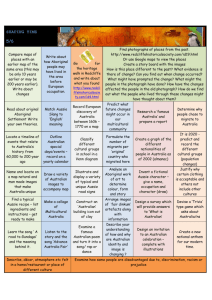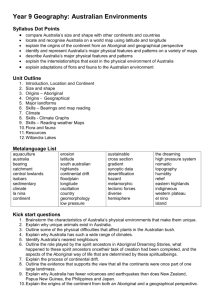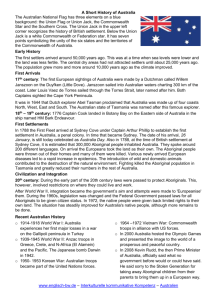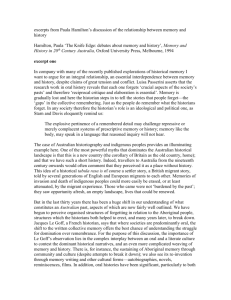Year 9 History: Making a Nation
advertisement
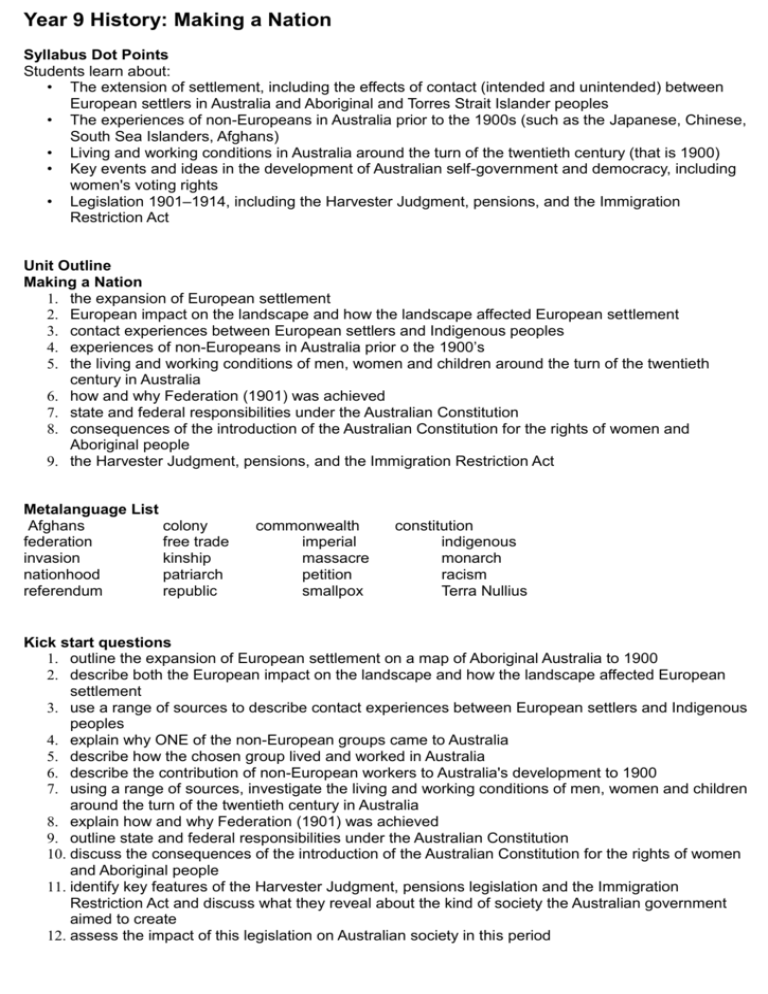
Year 9 History: Making a Nation Syllabus Dot Points Students learn about: • The extension of settlement, including the effects of contact (intended and unintended) between European settlers in Australia and Aboriginal and Torres Strait Islander peoples • The experiences of non-Europeans in Australia prior to the 1900s (such as the Japanese, Chinese, South Sea Islanders, Afghans) • Living and working conditions in Australia around the turn of the twentieth century (that is 1900) • Key events and ideas in the development of Australian self-government and democracy, including women's voting rights • Legislation 1901–1914, including the Harvester Judgment, pensions, and the Immigration Restriction Act Unit Outline Making a Nation 1. the expansion of European settlement 2. European impact on the landscape and how the landscape affected European settlement 3. contact experiences between European settlers and Indigenous peoples 4. experiences of non-Europeans in Australia prior o the 1900’s 5. the living and working conditions of men, women and children around the turn of the twentieth century in Australia 6. how and why Federation (1901) was achieved 7. state and federal responsibilities under the Australian Constitution 8. consequences of the introduction of the Australian Constitution for the rights of women and Aboriginal people 9. the Harvester Judgment, pensions, and the Immigration Restriction Act Metalanguage List Afghans colony federation free trade invasion kinship nationhood patriarch referendum republic commonwealth imperial massacre petition smallpox constitution indigenous monarch racism Terra Nullius Kick start questions 1. outline the expansion of European settlement on a map of Aboriginal Australia to 1900 2. describe both the European impact on the landscape and how the landscape affected European settlement 3. use a range of sources to describe contact experiences between European settlers and Indigenous peoples 4. explain why ONE of the non-European groups came to Australia 5. describe how the chosen group lived and worked in Australia 6. describe the contribution of non-European workers to Australia's development to 1900 7. using a range of sources, investigate the living and working conditions of men, women and children around the turn of the twentieth century in Australia 8. explain how and why Federation (1901) was achieved 9. outline state and federal responsibilities under the Australian Constitution 10. discuss the consequences of the introduction of the Australian Constitution for the rights of women and Aboriginal people 11. identify key features of the Harvester Judgment, pensions legislation and the Immigration Restriction Act and discuss what they reveal about the kind of society the Australian government aimed to create 12. assess the impact of this legislation on Australian society in this period
